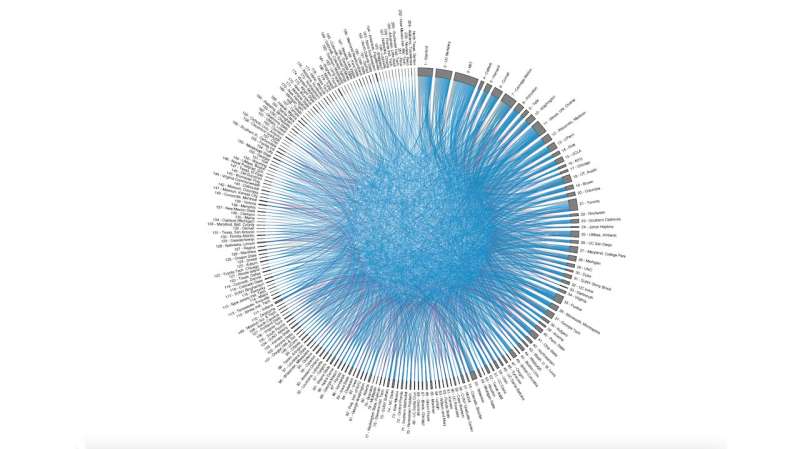Two studies quantify bias in US higher education

Two recent papers by CU Boulder and SFI co-authors explore the socioeconomic makeup and the educational backgrounds of tenure-track faculty across the U.S.
The first study, published in Nature Human Behavior in August, showed that academic faculty are 25 times more likely to have a parent with a doctorate degree. Moreover, researchers Allison Morgan (CU Boulder), Nicholas LaBerge (CU Boulder), former Complexity Postdoctoral Fellow Daniel Larremore (CU Boulder), SFI Professor Mirta Galesic, Jennie Brand (UCLA), and SFI External Professor Aaron Clauset (CU Boulder) found that the rate nearly doubles at prestigious universities, and has held more or less constant for the past 50 years.
A related study, published in Nature in September, is the most thorough analysis to date of the faculty structure in U.S. education. Co-authors Hunter Wapman (CU Boulder), Sam Zhang (CU Boulder), Clauset, and Larremore analyzed 300,000 tenure-track faculty employed in the years 2011–2020 at 368 Ph.D.-granting institutions. They found that just 20% of U.S. universities produced 80% of tenure-track faculty across the country. Among this 20% minority, the top five producing schools trained more tenured U.S. faculty than all universities outside the U.S. combined.
The researchers note that a biased system makes it much harder for good ideas to spread from less prominent institutions, and from socioeconomic and demographic groups that are under-represented amongst university faculty.
More information: Allison C. Morgan et al, Socioeconomic roots of academic faculty, Nature Human Behaviour (2022). DOI: 10.1038/s41562-022-01425-4
K. Hunter Wapman et al, Quantifying hierarchy and dynamics in US faculty hiring and retention, Nature (2022). DOI: 10.1038/s41586-022-05222-x
Journal information: Nature , Nature Human Behaviour
Provided by Santa Fe Institute




















